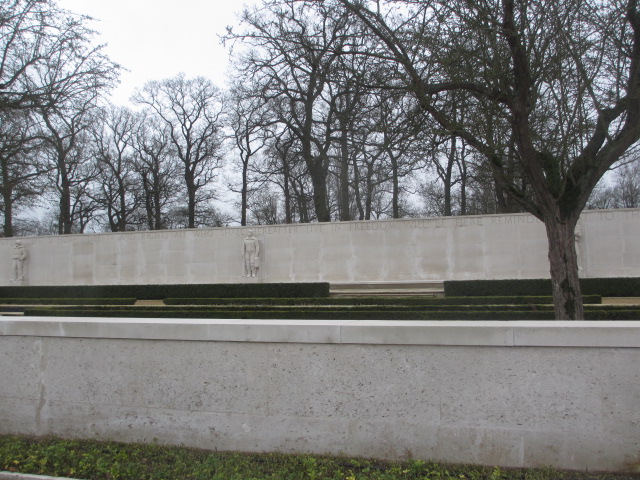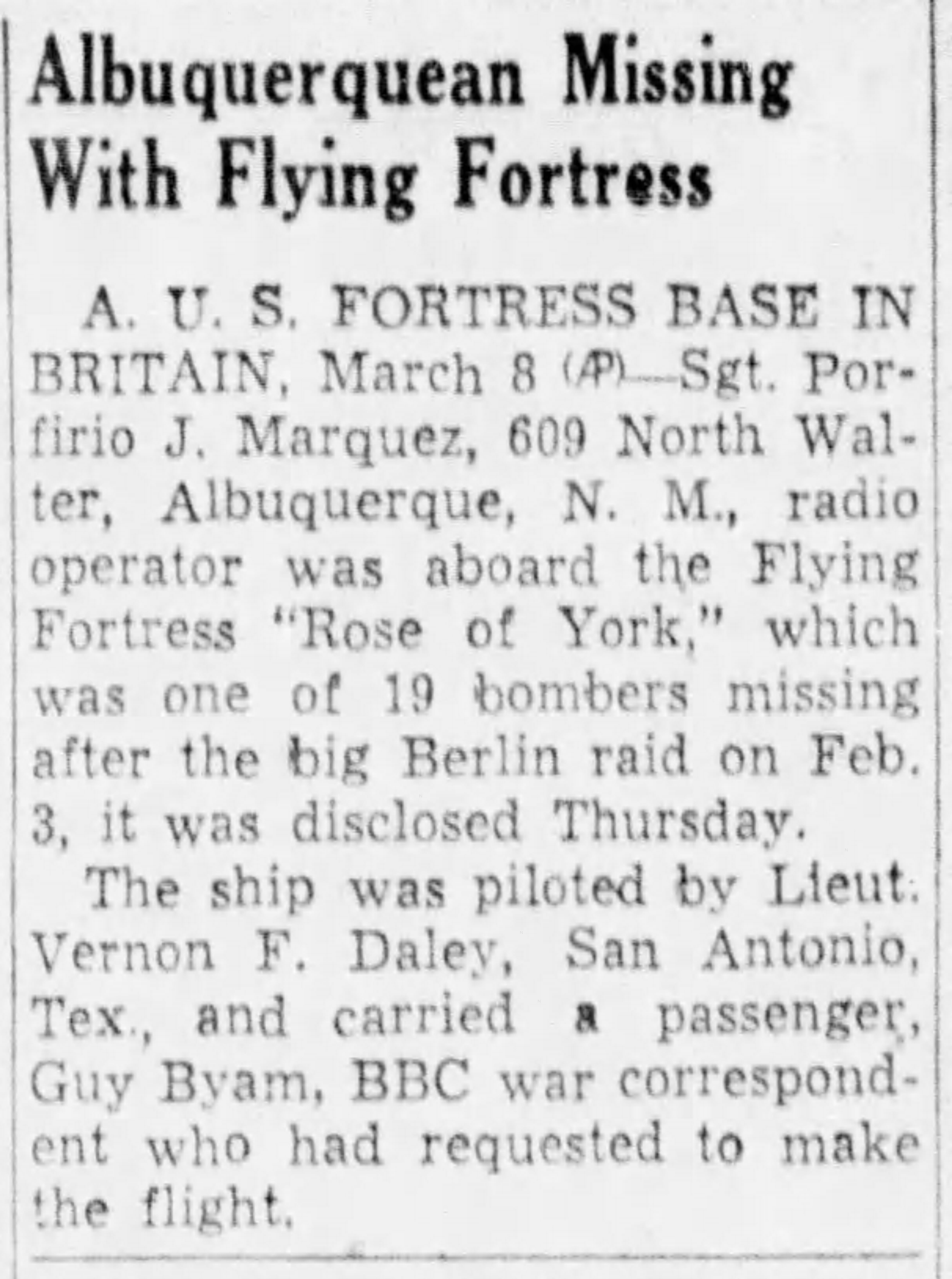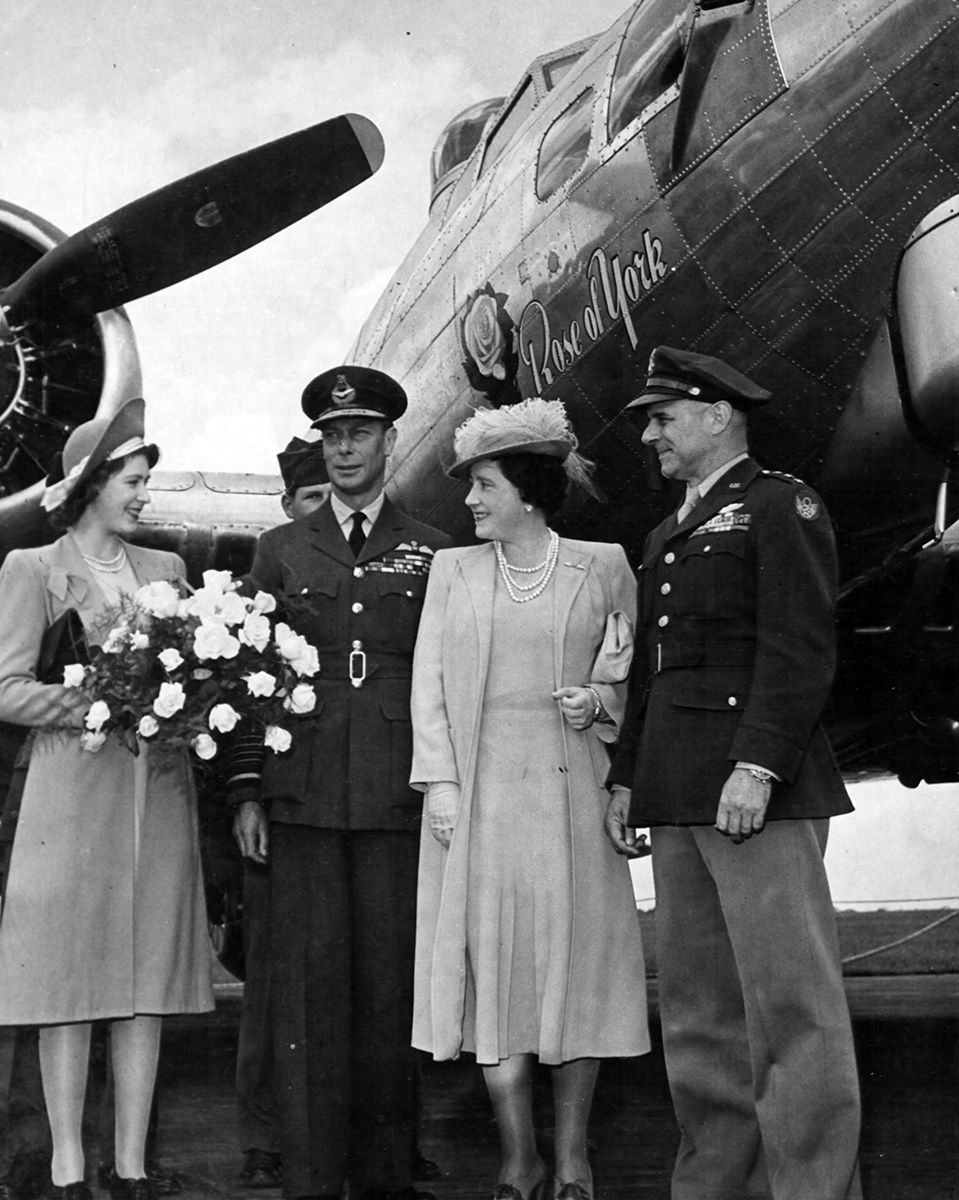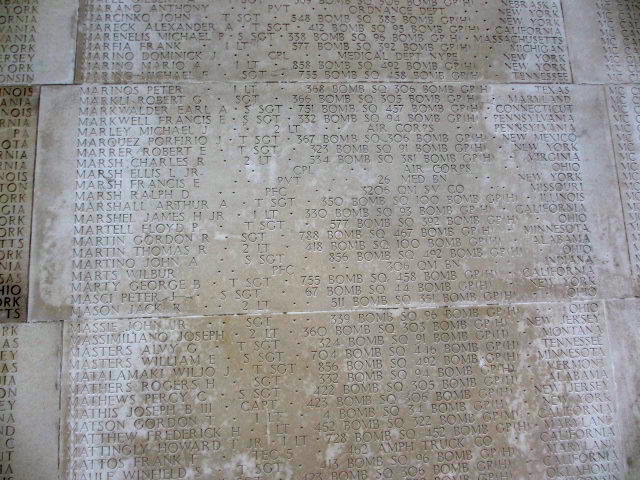Technical Sergeant Porfirio J Marquez, from New Mexico, Service Number: 38166188, Radio Operator/Gunner with the 367th Bomber Squadron, 306th Bomber Group. On 3 Feb 1945, in B-17 42-102547 'Rose of York', on return from Berlin bomber was hit by concentrated and accurate AA fire, last contact indicated one engine out and another trailing gasoline, failed to return, posted MIA, crashed into North Sea. Changed to Killed in Action (KIA).
Distinguished Flying Cross, Air Medal with 5 Oak Leaf Clusters, Purple Heart
Contributor: carolyn deloach (50647457)
The 306th was the center of media attention on 6 July 1944, when Thurleigh was visited by the British Royal Family. As cameras rolled, King George VI, his wife Queen Elizabeth, and their daughter Heiress Presumptive Princess Elizabeth (the future Queen Elizabeth II) were led to a new B-17G of the 367th Bomb Squadron. The new replacement aircraft had been named Rose Of York in honor of the 18-year-old Princess, who ceremonially christened the bomber. On her 50th (some list as 63rd) mission on 3 February 1945, Rose Of York was hit by flak over Berlin; she disappeared over English Channel or North Sea while returning home.
Without fighter escort and in the face of powerful opposition, the group completed an assault against aircraft factories in central Germany on 11 January 1944, earning a Distinguished Unit Citation (DUC) for the mission. The group participated in the Big Week intensive campaign against the German aircraft industry, 20–25 February 1944. The group earned another DUC for effectively bombing an aircraft assembly plant at Bernberg, Gummersbach, Germany on 22 February, even though escort fighters had abandoned the mission because of weather. Often supported ground forces and attacked interdictory targets in addition to its strategic operations. Hit airfields and marshaling yards in France, Belgium, and Germany in preparation for Normandy. On D-Day, 6 June 1944, the unit raided railroad bridges and coastal guns in support of the assault. Assisted ground forces during the Saint-Lô breakthrough in July, then participated in the airborne portion of Operation Market Garden, the invasion of the Netherlands in September. During the Battle of the Bulge, December 1944 – January 1945, the 306th attacked airfields and marshaling yards to help stop the German advance. Bombed enemy positions in support of the airborne assault across the Rhine River in March 1945, the Operation Varsity portion of the Western Allied invasion of Germany.
Technical Sergeant Porfirio J Marquez, from New Mexico, Service Number: 38166188, Radio Operator/Gunner with the 367th Bomber Squadron, 306th Bomber Group. On 3 Feb 1945, in B-17 42-102547 'Rose of York', on return from Berlin bomber was hit by concentrated and accurate AA fire, last contact indicated one engine out and another trailing gasoline, failed to return, posted MIA, crashed into North Sea. Changed to Killed in Action (KIA).
Distinguished Flying Cross, Air Medal with 5 Oak Leaf Clusters, Purple Heart
Contributor: carolyn deloach (50647457)
The 306th was the center of media attention on 6 July 1944, when Thurleigh was visited by the British Royal Family. As cameras rolled, King George VI, his wife Queen Elizabeth, and their daughter Heiress Presumptive Princess Elizabeth (the future Queen Elizabeth II) were led to a new B-17G of the 367th Bomb Squadron. The new replacement aircraft had been named Rose Of York in honor of the 18-year-old Princess, who ceremonially christened the bomber. On her 50th (some list as 63rd) mission on 3 February 1945, Rose Of York was hit by flak over Berlin; she disappeared over English Channel or North Sea while returning home.
Without fighter escort and in the face of powerful opposition, the group completed an assault against aircraft factories in central Germany on 11 January 1944, earning a Distinguished Unit Citation (DUC) for the mission. The group participated in the Big Week intensive campaign against the German aircraft industry, 20–25 February 1944. The group earned another DUC for effectively bombing an aircraft assembly plant at Bernberg, Gummersbach, Germany on 22 February, even though escort fighters had abandoned the mission because of weather. Often supported ground forces and attacked interdictory targets in addition to its strategic operations. Hit airfields and marshaling yards in France, Belgium, and Germany in preparation for Normandy. On D-Day, 6 June 1944, the unit raided railroad bridges and coastal guns in support of the assault. Assisted ground forces during the Saint-Lô breakthrough in July, then participated in the airborne portion of Operation Market Garden, the invasion of the Netherlands in September. During the Battle of the Bulge, December 1944 – January 1945, the 306th attacked airfields and marshaling yards to help stop the German advance. Bombed enemy positions in support of the airborne assault across the Rhine River in March 1945, the Operation Varsity portion of the Western Allied invasion of Germany.
Sponsored by Ancestry
Advertisement
Advertisement





